Samsung and Apple sell hundreds of millions of smartphones each year. But when any of us buy a smartphone, be it an Android phone or iPhone, we’re also buying a digital camera. For many, the camera can make or break a buying decision when smartphone shopping. And these two tech giants take very different approaches to the cameras used in their phones.
Apple has traditionally tuned the iPhone to take more life-like photos, attempting to mirror what the human eye sees when a photo is snapped. On the other hand, Samsung phones are known to result in pictures with more saturation and brighter colors that many find appealing.
Apple’s iPhone 15 Pro Max objectively has the best camera system Apple has ever put into an iPhone. Samsung’s Galaxy S23 Ultra has set the bar for Android phones since its release in February. With that in mind, I’ve gone out, shot a bunch of photos and compared the results. Below, you’ll be able to look at the photos I took and judge for yourself which phone you think is the camera master between Apple and Samsung.
A quick rundown of the specs
Before we take a look at photo samples, here’s a breakdown of each phone’s camera array.
| Galaxy S23 Ultra | iPhone 15 Pro Max | |
| Main | 200MP, f/1.7, OIS | 48MP, f/1.78, OIS |
| Ultrawide | 12MP, f/2.2, 120 degree FOV | 12MP f/2.2, 120-degree FOV |
| Telephoto | 10MP, f/2.4, OIS, 3x optical zoom and 10MP f/4.9, 10x optical zoom, 100x digital zoom | 12MP, f/2.8, OIS, 5x optical zoom, 25x digital zoom |
| Front | 12MP f/2.2 | 12MP f/1.9 |
Samsung’s Galaxy S23 Ultra has an impressive camera spec sheet. There are four rear cameras, starting with the 200-megapixel main camera, a 12-megapixel ultra-wide camera and two 10-megapixel telephoto lenses. The first telephoto camera offers 3x optical zoom, while the second one has 10x optical zoom. However, you can get up to 100x digital zoom on the S23 Ultra to get you very close to your subject, even if they’re across a football field.
The iPhone 15 Pro Max, meanwhile, has a three-lens camera array. The main sensor is 48 megapixels, the ultra-wide comes in at 12-megapixels and the single telephoto lens is also 12-megapixels, with 5x optical zoom and up to 25x digital zoom.
The front-facing cameras on both phones are 12-megapixel sensors. However, Apple’s front camera is part of its TrueDepth facial recognition system.
The biggest differences come down to the main cameras having significantly different megapixel counts and the S23 Ultra having an extra lens, but overall, the camera systems between the two phones are fairly similar. That said, each company’s philosophical approach to camera and image processing yields different results, as you’ll see below.
The main camera: A matter of personal preference
Even though the S23 Ultra can capture images at up to 200 megapixels and the iPhone 15 Pro Max can capture images at up to 48 megapixels, the S23 Ultra produces 12-megapixel photos, and the iPhone 15 Pro Max captures 24-megapixel photos by default. You can, however, change settings to set the default for the iPhone to 12-megapixel.
For the purpose of all photo comparisons below, I didn’t tweak any camera settings or pro controls on either phone. I simply opened the camera app, framed the shot and tapped the shutter button. That’s how most of us take photos on a daily basis.

I was really surprised at how close the two photos of the mural looked to one another. In fact, it almost appears the picture from the iPhone 15 Pro Max is more saturated than the S23 Ultra. Outside of the lobster in the middle of the photo, both of these photos look almost identical. (Click on the images to view a larger version of each one to judge for yourself. Each photo is labeled with the camera it came from for easy identification.)


However, when you look at the picture of the boat, it’s clear the S23 Ultra cranked up the saturation. The blue on the boat is more vibrant, and the shadows aren’t as dark as those on the iPhone 15 Pro Max.
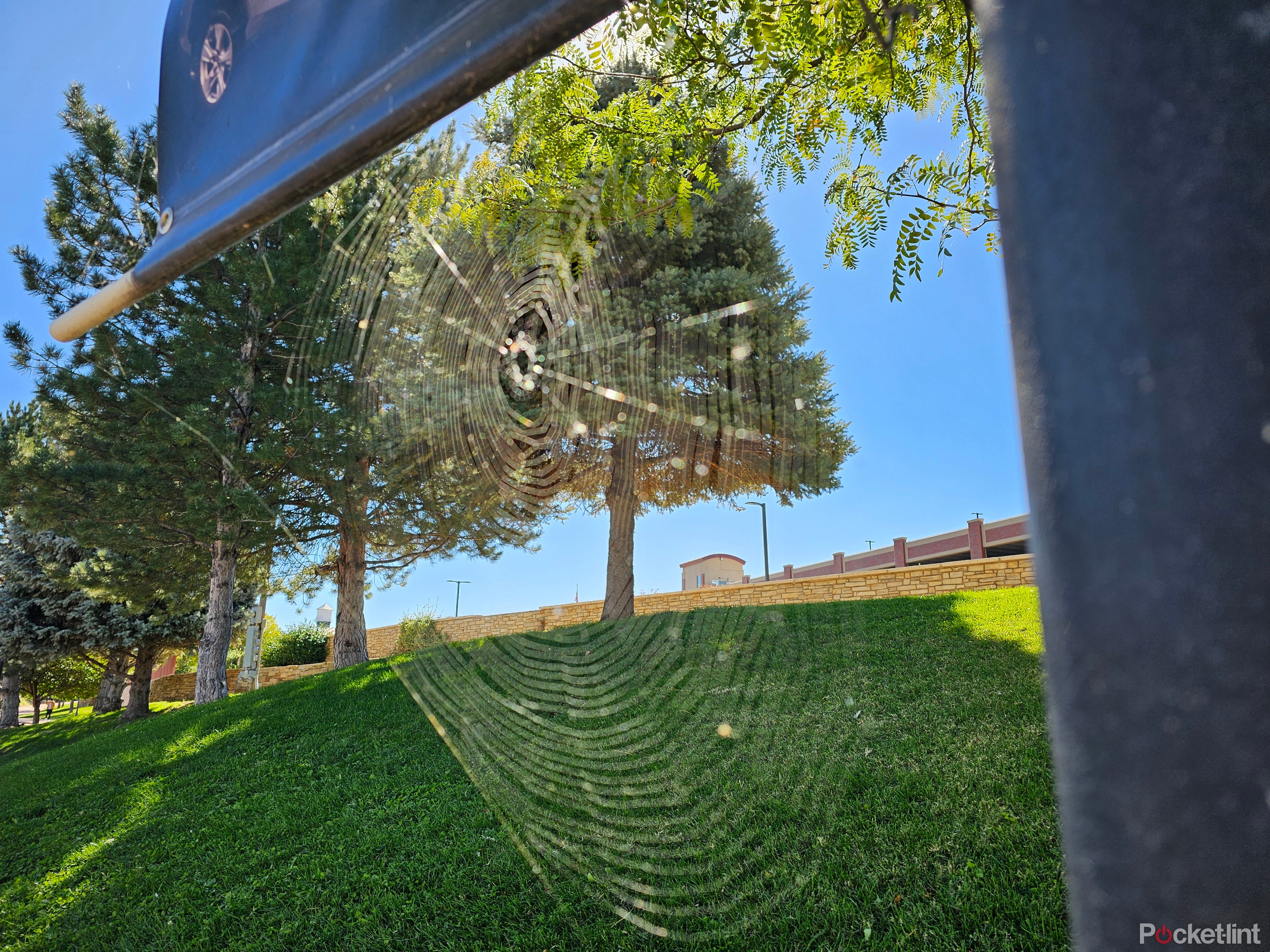
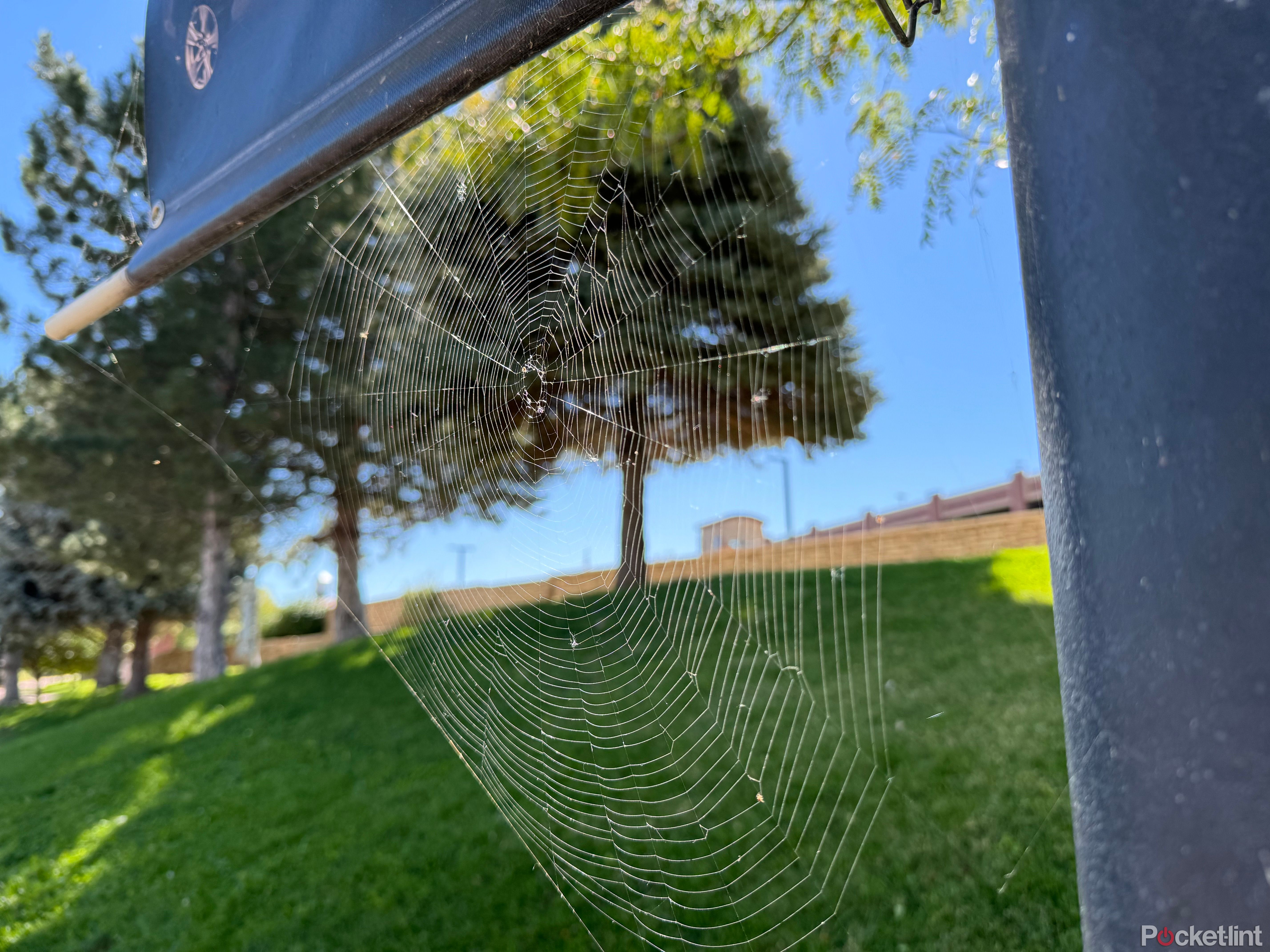
I found this spiderweb along my typical photo walk trail and just had to take a picture. The iPhone 15 Pro Max almost instantly focussed on the web, and I snapped the pic, but the S23 Ultra simply wouldn’t autofocus on the spiderweb. The results of this one are pretty obvious – the 15 Pro Max took a really cool picture of a spiderweb, while the S23 Ultra didn’t.
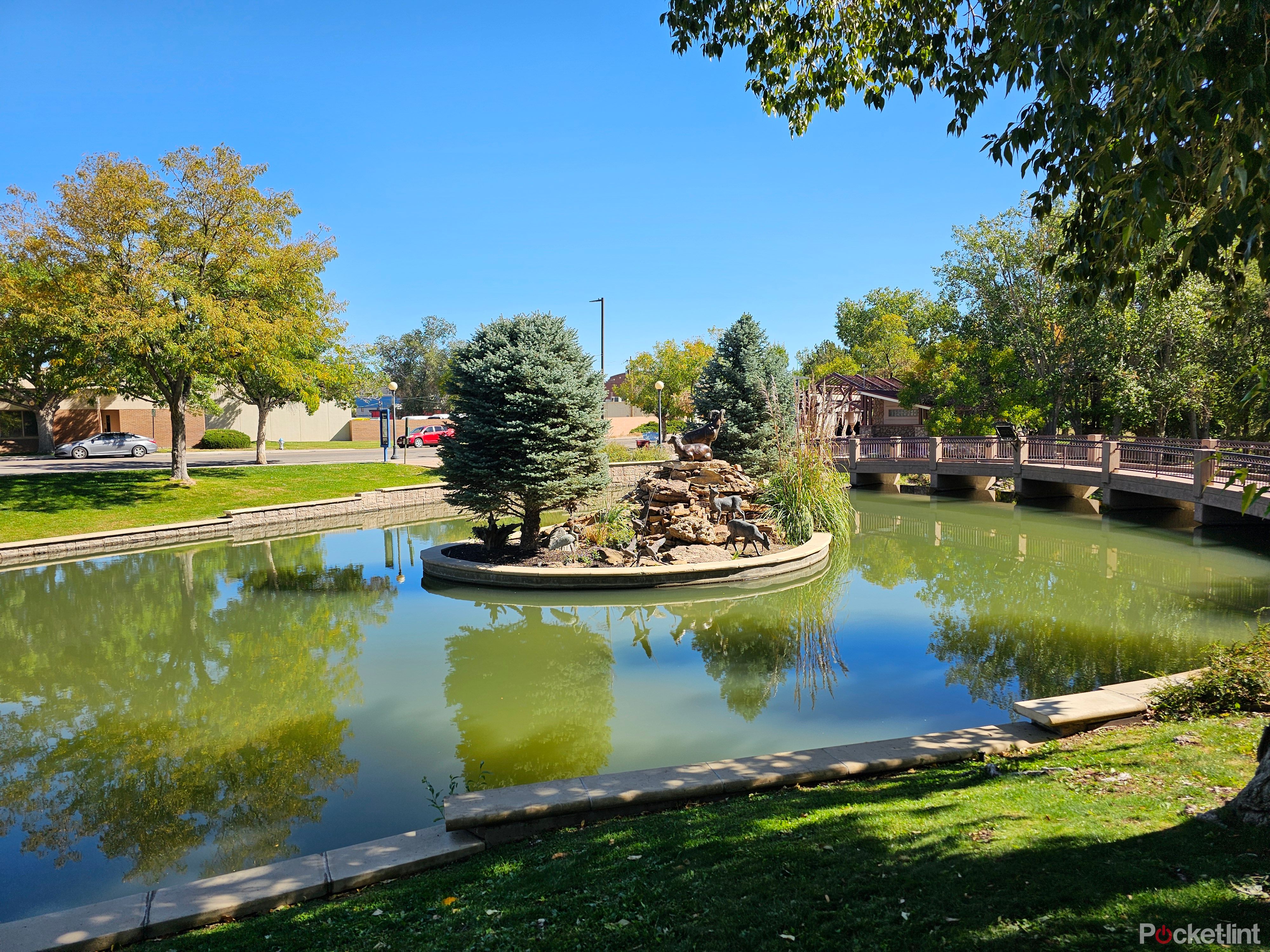
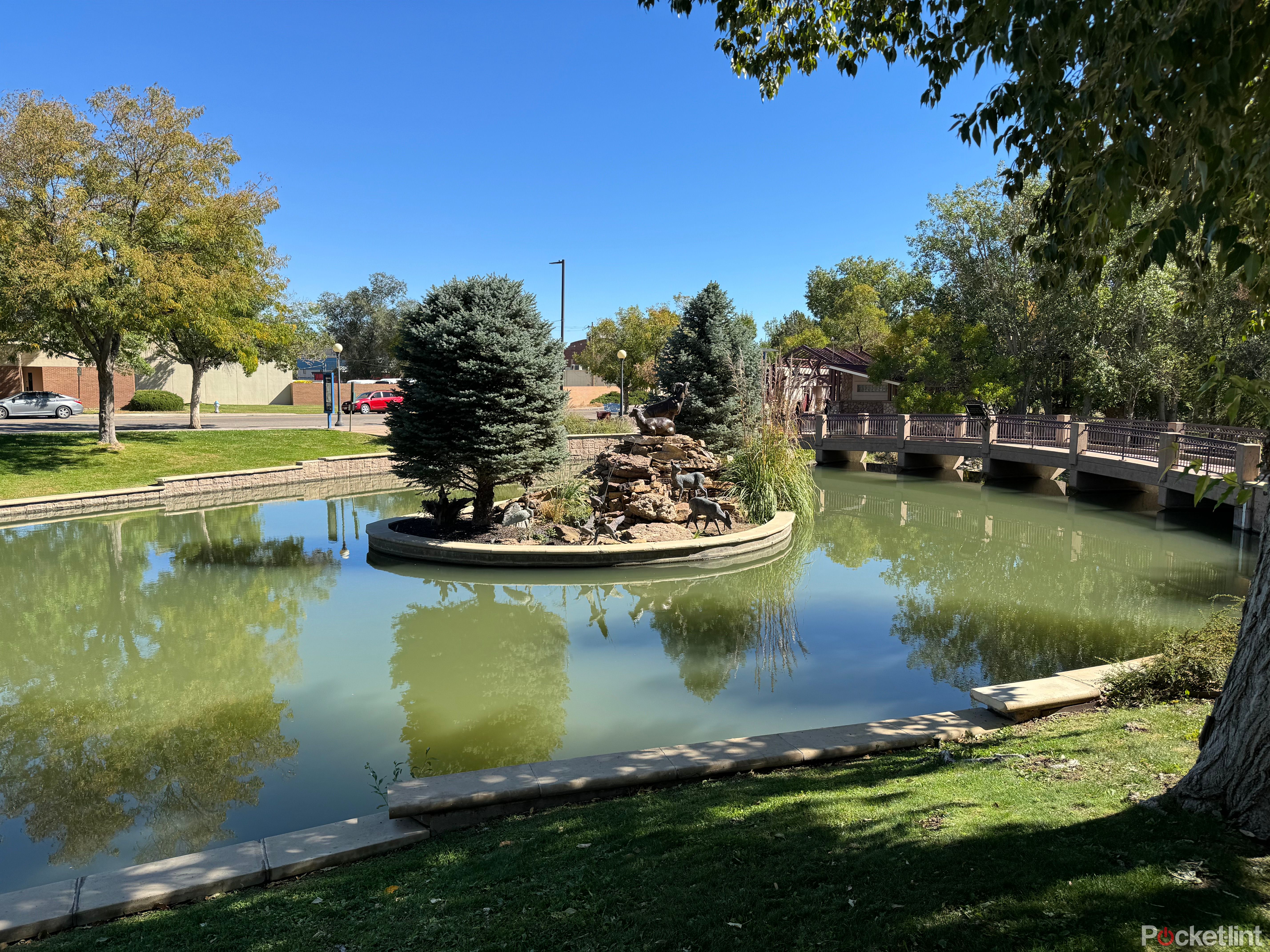
These two pictures are close, but once you look closer at the water’s colour and the animal statues’ exposure level on the island, you begin to see some pretty big differences. The water in the S23 Ultra’s photo has a brighter green hue to it, as do the trees in the background. The blue of the sky reflecting in the water is also a brighter blue compared to the iPhone 15 Pro Max’s picture.
The statues are overexposed in the S23 Ultra’s picture, while they’re more accurate to what I saw in real life in the iPhone 15 Pro Max’s picture.
Here are a few more pictures for you to look at, but again, I think you’ll find that the S23 Ultra’s photos have a higher saturation level than the iPhone 15 Pro Max.
None of these pictures are bad (save for the S23 Ultra’s spiderweb picture), and I’d be happy to share any of these across social media or have them on hand. Which set of pictures you like more is going to come down to personal preference. For me, the over-saturation of the blue boat is a prime example of why I have long preferred the iPhone’s camera over Samsung’s.
Zoom: Get close or really close
The S23 Ultra has two different telephoto lenses, each capable of its own optical zoom level. For the first time, the iPhone 15 Pro Max has a 5x optical zoom. Optical zoom relies on hardware to zoom in, which leads to clearer photos than if you’re to rely on digital zoom. The S23 Ultra has a Space Zoom 100x digital zoom feature. In contrast, the iPhone 15 Pro Max has a 25x digital zoom capability, which relies on computational photography to improve the final shot.

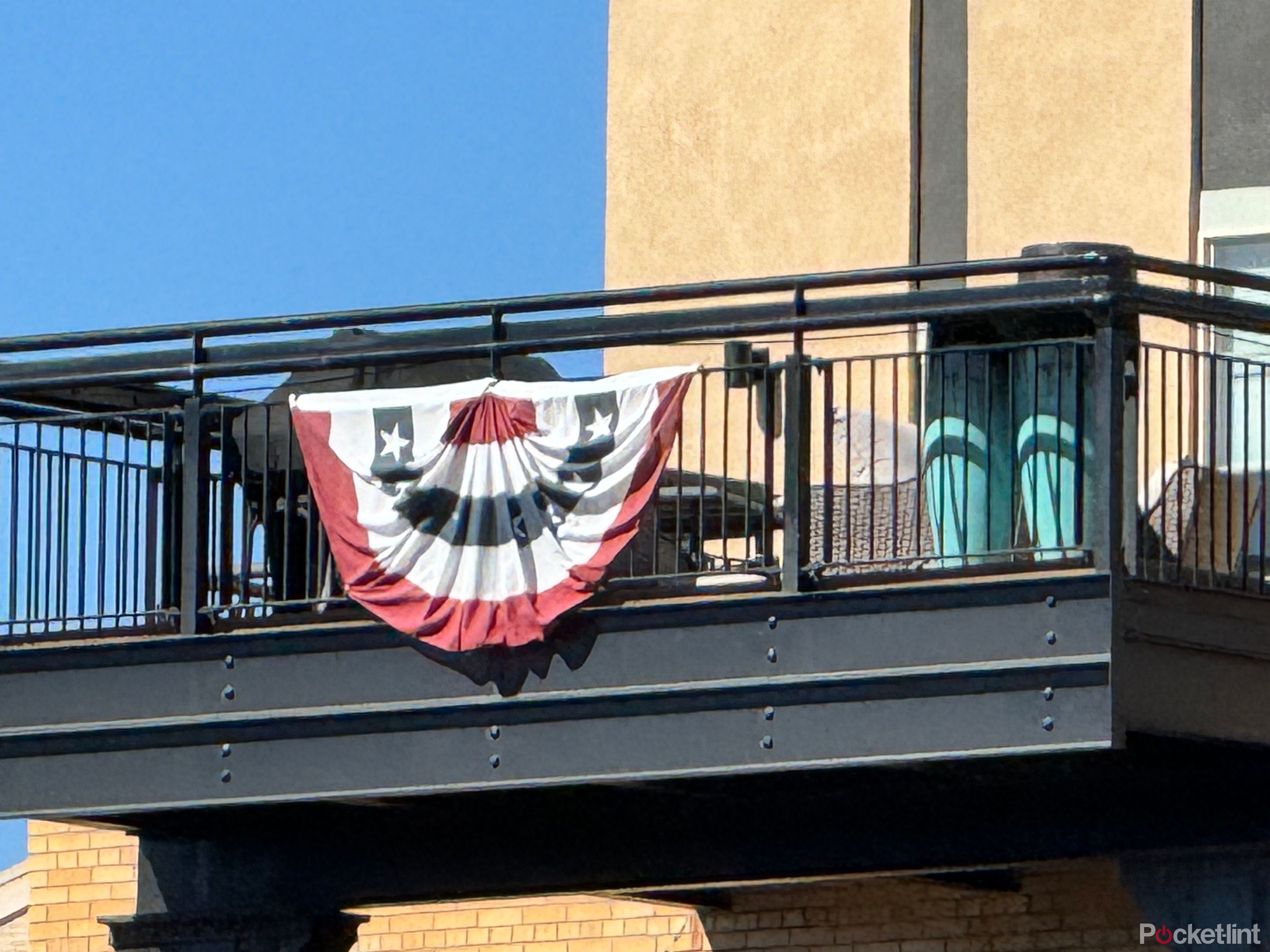
When you use digital zoom, the results are going to be hit or miss. Above, you see a 100x photo from the S23 Ultra next to a 25x photo from the iPhone 15 Pro Max. Neither photo is overly impressive, other than the fact that you can zoom in that far on either phone.


Both of the above photos were taken at 25x zoom level, which is the max zoom level of the iPhone 15 Pro Max. Both photos look pixelated, especially around the edges of the statue, but that’s to be expected when using digital zoom at this level. The shadow on the boy’s face is darker and more prominent in the S23 Ultra’s photo, while the iPhone 15 Pro Max captured more of the sunlight that was on his face.
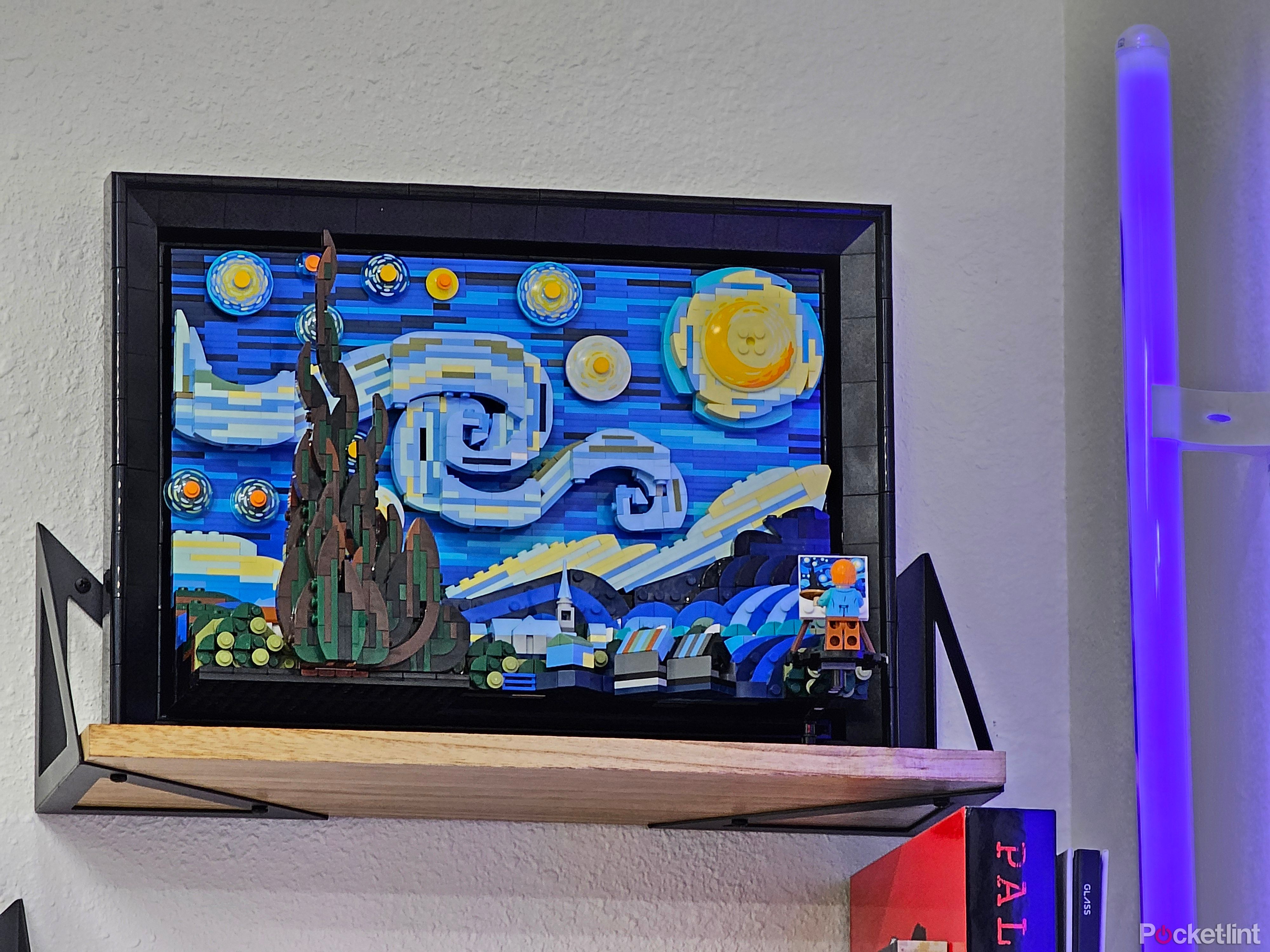
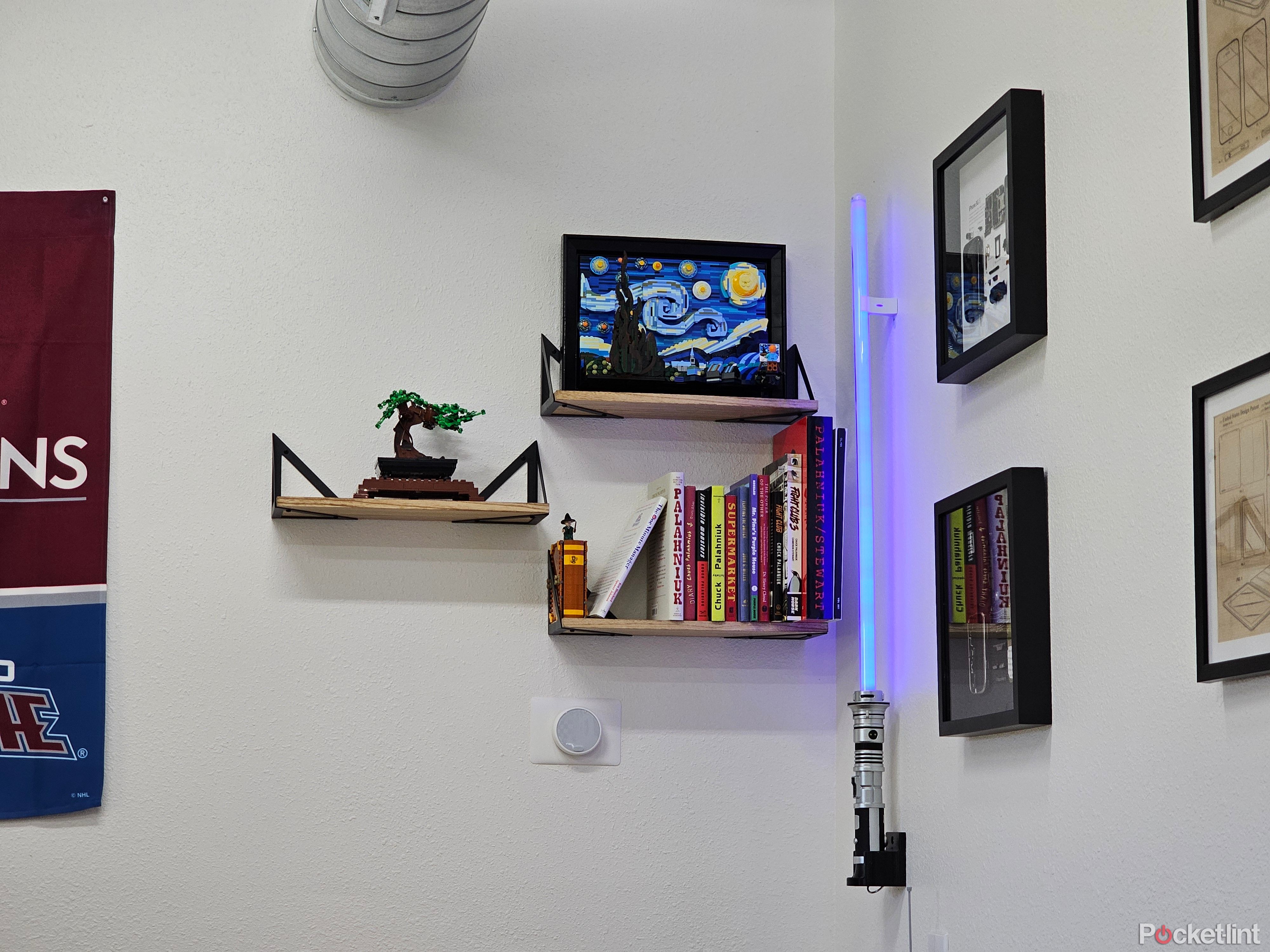
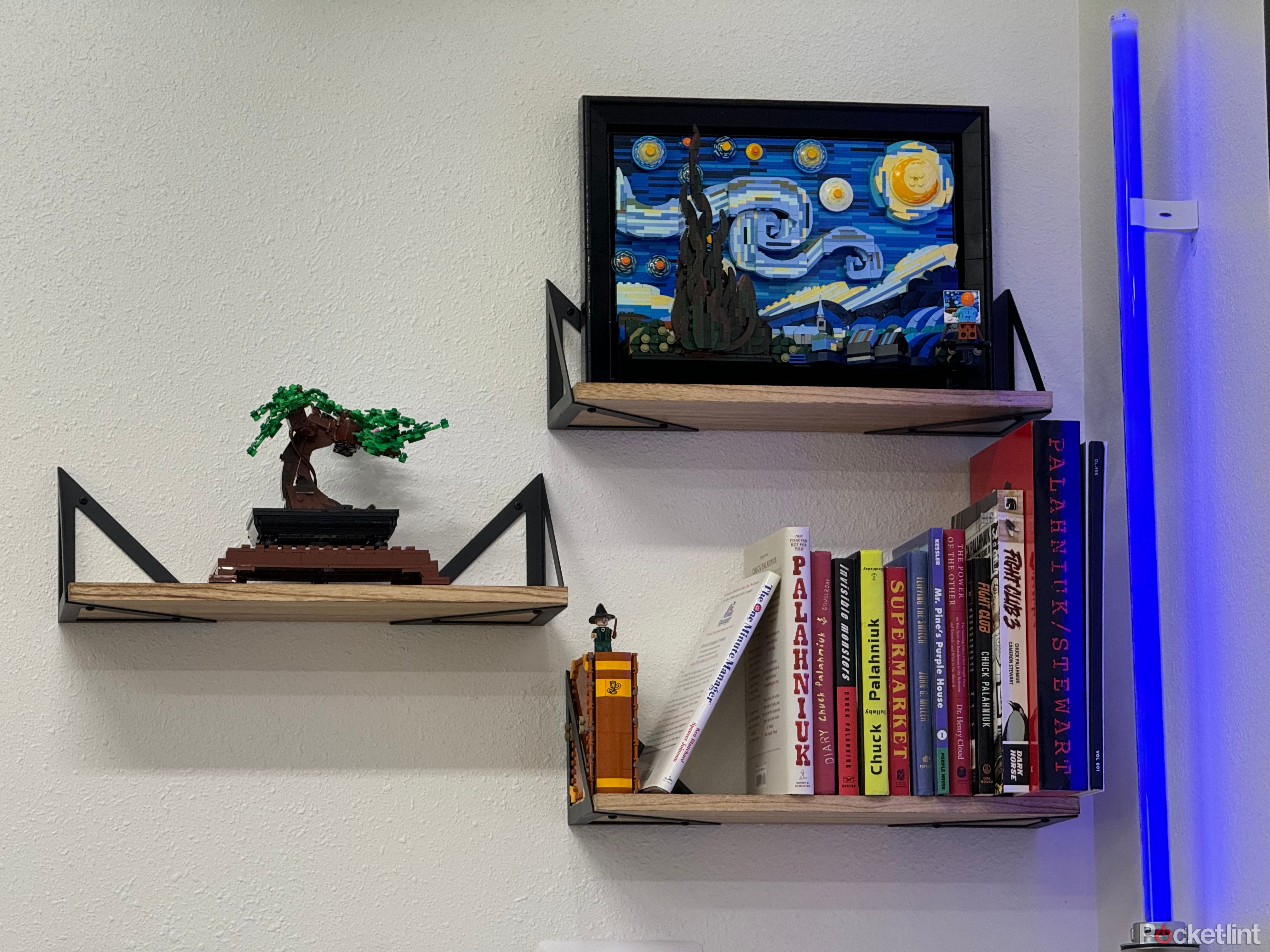
I also snapped a picture using each phone’s different optical zoom. The S23 Ultra is more versatile thanks to having two different zoom levels. However, it really puts Samsung’s approach saturation levels on full display when you look at the 10x picture. Specifically when you look at the Starry Night Lego set. The blues and yellow are blown out and just don’t look right at all.
Portrait mode: Plenty of bokeh
Portrait mode photos can make it feel like – and look like – you’re using a professional camera with fancy lenses in order to achieve a look of added depth to your pictures. Like all modern smartphones, the S23 Ultra and the iPhone 15 Pro Max have dedicated portrait modes in the camera app. The S23 Ultra offers three different zoom levels – 1x, 2x, and 3x – when taking a portrait mode shot, defaulting to 2x when you switch modes. The iPhone also offers three different zoom levels – 1x, 2x and 5x – when you switch to portrait mode, also defaulting to 2x.
I snapped a couple of pictures of my son using portrait mode on both phones. One was in a well-lit environment, while the other was under a bridge where both phones had to deal with shadows and a bright background.
Both of the well-lit shots look excellent, matching in the depth and overall quality of the shot. You don’t really see over-saturation in the S23 Ultra’s picture unless you really look closely. If anything, the S23 Ultra’s picture lightened the shadows on his face, giving the picture an overall brighter look to it.
But under the bridge, you see a world of difference between the two. The S23 Ultra’s picture is brighter, to the point where the background is overexposed in some areas, but it’s well-lit and easier to see. The photo from the iPhone 15 Pro Max shows him in a darker environment, with the background properly exposed, just as it looked in person. I’m torn on the last two photos, as I prefer how he looks in the S23 Ultra’s picture but could do without the background, with the opposite being true for the iPhone’s picture.
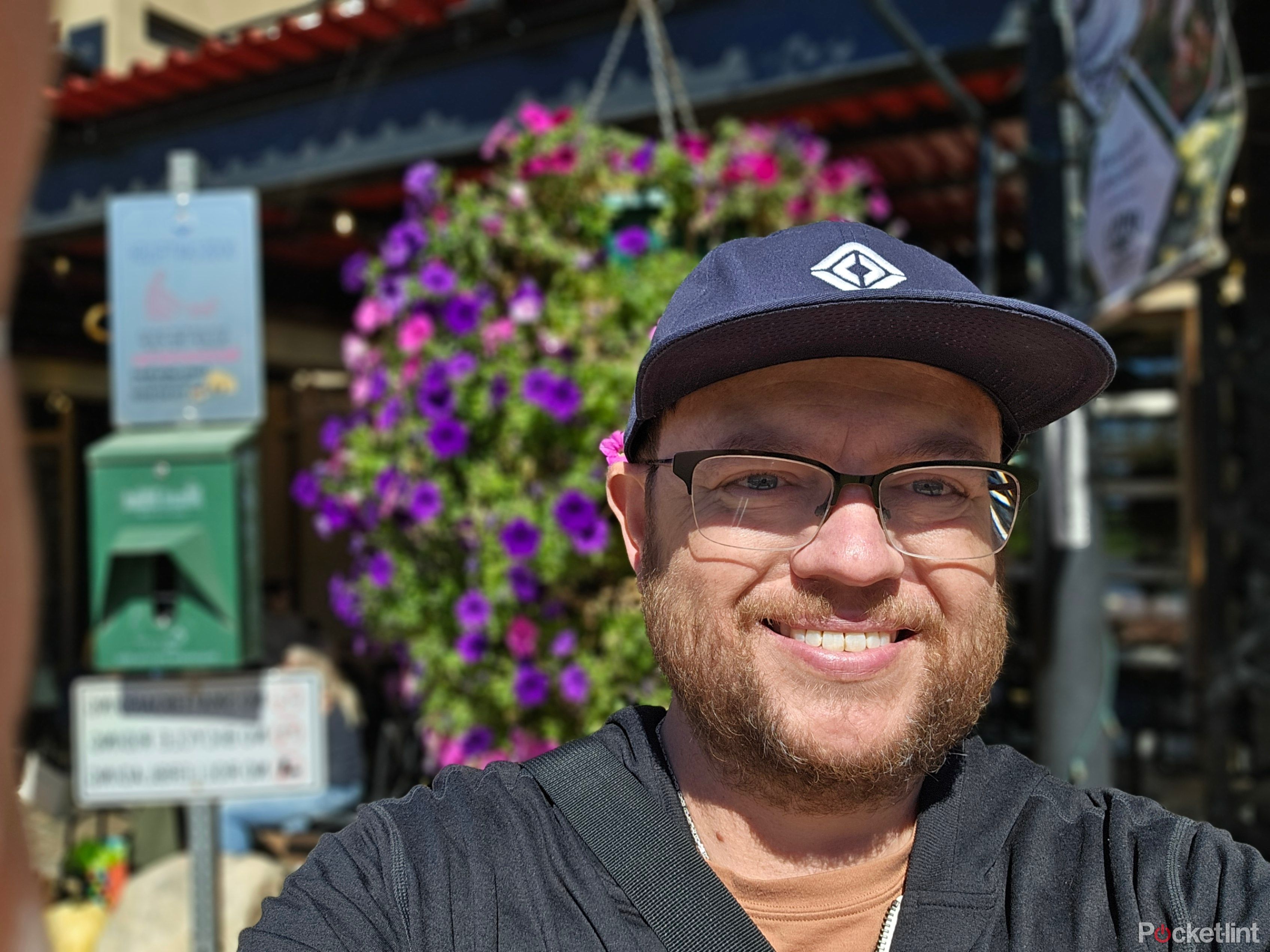
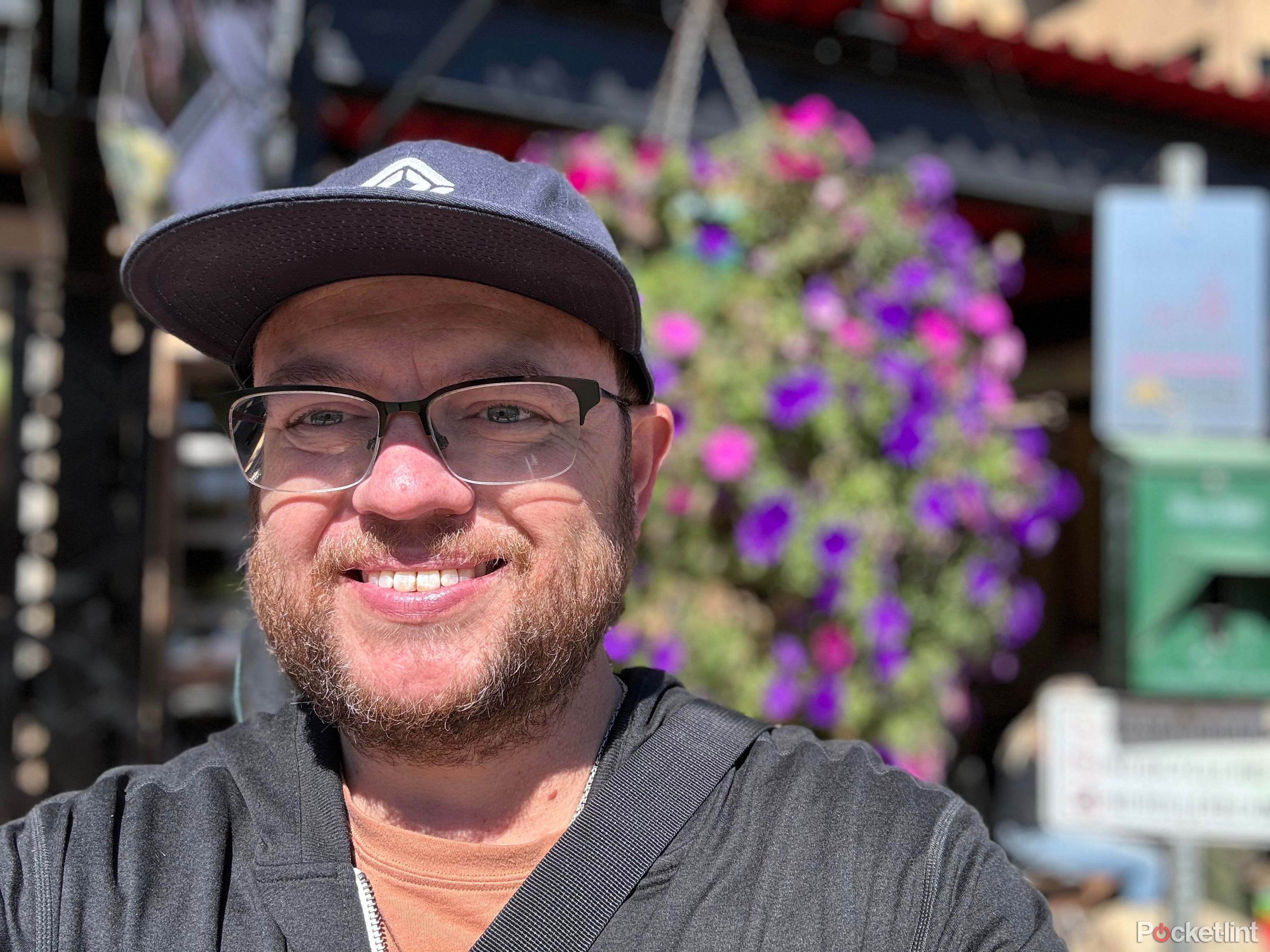
I captured a quick portrait selfie using the front-facing camera of myself on both phones. The S23 Ultra mirrored the selfie, leaving my face a little washed out. It also didn’t apply the bokeh to the entire plant behind my head, leaving one pink flower to make it look like it was tucked behind my ear. The iPhone 15 Pro Max looks more true to life, and the depth information was spot on.
Night modes: All over the place
Both phones have dedicated low-light or night mode settings that are triggered on their own, depending on how much light is available. For the following pictures, I let each phone decide when and how long to use its respective night mode to capture each photo.
You can see in the picture with the ghosts hanging from the tree the S23 Ultra only wanted to focus on the background, leaving the Halloween decorations out of focus. Although looking closer, the iPhone didn’t fully focus on the ghosts either.
As for the picture of the decorations on the front porch, I really like the way the iPhone 15 Pro Max handled the various colors from the lights and didn’t let those lights influence the look of the concrete below it. The S23 Ultra, however, saturated the colors in the lights and let those same colors bleed onto and take over the color of the porch.
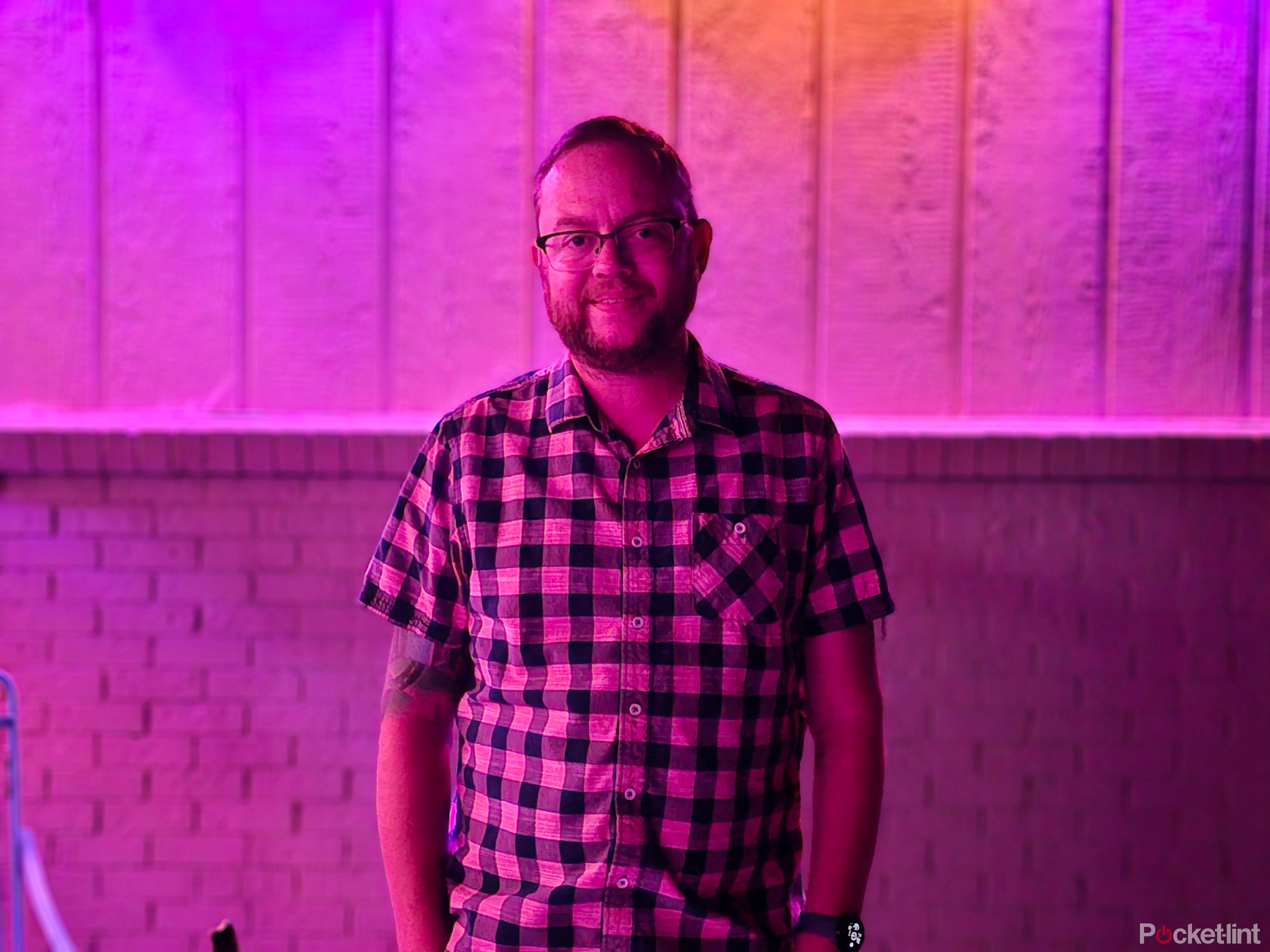
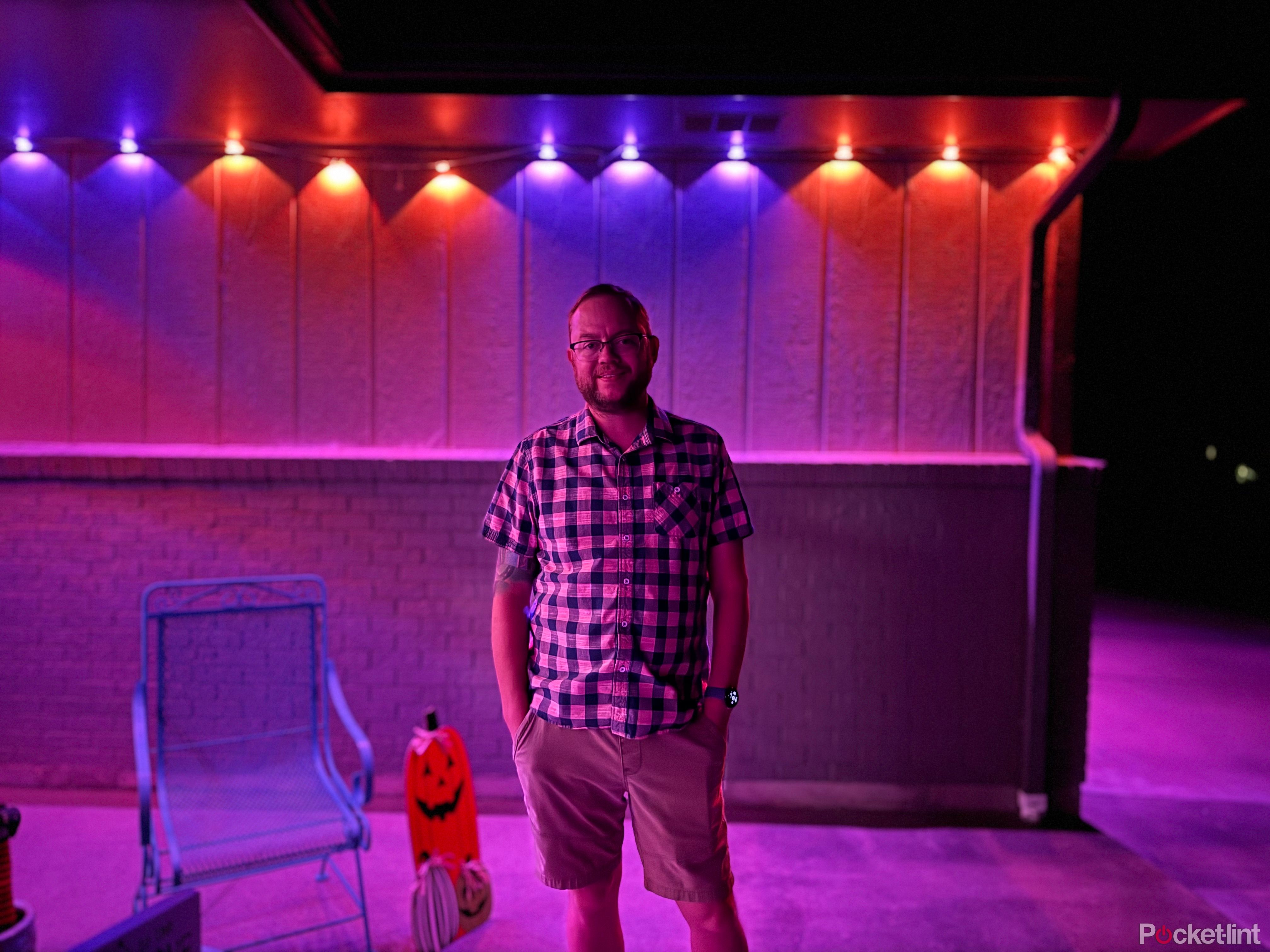
Here’s a night mode portrait picture in what I’d consider difficult lighting conditions, thanks to the lights in the background. There’s no contest here – the S23 Ultra didn’t expose the subject as much as I would have liked to see while capturing all of the background light and letting it take over the entire picture.
However, the iPhone 15 Pro Max captured and exposed both, even adding depth to the wall behind me. I didn’t expect this result at all.
Apple vs Samsung camera comparison: Bottom line
There’s so much more to both of these phones and their respective camera setups, including pro shooting modes where you can fine-tune and control every setting for a specific shot. And I didn’t even begin to contrast and compare the overall layout of the camera app and its respective settings for everyday users.
At the end of all those photos, deciding which phone has a better camera is admittedly going to come down to personal preference. For me, that’s the iPhone 15 Pro Max’s true-to-life approach. However, I know many people who are adamant Samsung phones take the best pictures without question.
Trending Products

Cooler Master MasterBox Q300L Micro-ATX Tower with Magnetic Design Dust Filter, Transparent Acrylic Side Panel, Adjustable I/O & Fully Ventilated Airflow, Black (MCB-Q300L-KANN-S00)

ASUS TUF Gaming GT301 ZAKU II Edition ATX mid-Tower Compact case with Tempered Glass Side Panel, Honeycomb Front Panel, 120mm Aura Addressable RGB Fan, Headphone Hanger,360mm Radiator, Gundam Edition

ASUS TUF Gaming GT501 Mid-Tower Computer Case for up to EATX Motherboards with USB 3.0 Front Panel Cases GT501/GRY/WITH Handle

be quiet! Pure Base 500DX ATX Mid Tower PC case | ARGB | 3 Pre-Installed Pure Wings 2 Fans | Tempered Glass Window | Black | BGW37

ASUS ROG Strix Helios GX601 White Edition RGB Mid-Tower Computer Case for ATX/EATX Motherboards with tempered glass, aluminum frame, GPU braces, 420mm radiator support and Aura Sync










